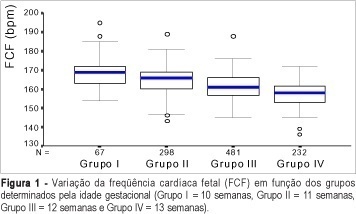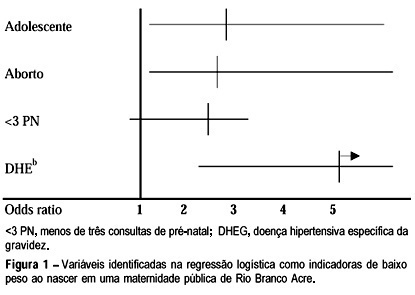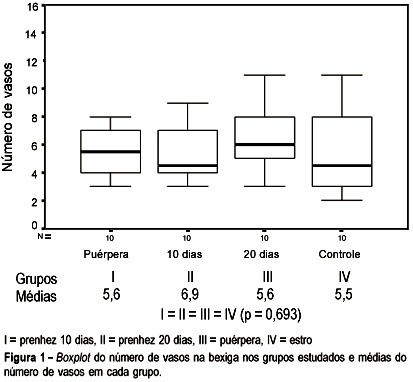Summary
Revista Brasileira de Ginecologia e Obstetrícia. 2001;23(9):575-580
DOI 10.1590/S0100-72032001000900005
Purpose: to check alcohol consumption during pregnancy regarding type of drink, amount ingested, awareness of alcohol consumption risk, and tracking its consumption during prenatal care. Methods: interview of 445 women who had just given birth in a maternity hospital from January to May, 1999. The data analysis was performed using Student's t test and Kruskal-Wallis nonparametric test. Results: of the women interviewed, 66.3% did not consume alcohol, 17.8% consumed it throughout pregnancy and 15.9% consumed it until pregnancy was confirmed, which occurred when they were 9.6 weeks pregnant on average; 98.7% of the women consumed it on weekends or at parties, and 1.3% daily. The mean ingestion was 14.74 grams/occasion for those who consumed alcohol throughout pregnancy and 25.83% grams/occasion for those who consumed it until pregnancy was confirmed. There were statistical differences between the mean rates in both groups. The mean intake per occasion was classified as moderate. The most ingested alcoholic beverage was beer (64.0%). Regarding awareness of the risk of alcohol intake, 71.5% believe that it is not good for the fetus health, 15.5% believe that it is not good for their own health. Alcohol consumption tracking was referred to by 48.8% of the women. Conclusion: a great number of women consumed alcoholic drinks at some time during pregnancy, despite being aware of the risks to their fetus. Prenatal care is not used as a favorable occasion for alcohol consumption tracking as well as for discontinuing its intake.
Summary
Revista Brasileira de Ginecologia e Obstetrícia. 2001;23(9):567-571
DOI 10.1590/S0100-72032001000900004
Purpose: to determine normal ranges for fetal heart rate (FHR) between the 10th and 14th week of pregnancy. Methods: a total of 1078 fetuses within a crown-rump length (CRL) from the 10th to the 14th week of pregnancy were evaluated. The fetuses were divided into 4 groups: Group I (10 weeks), Group II (11 weeks), Group III (12 weeks), Group IV (13 weeks). The fetal heart was seen using B-mode/M-mode at a sagital plane and FHR was recorded. FHR was electronically calculated using calipers within 3 consecutive cycles without fetal moveiments. Results: FRH ranged from 136 to 178 bpm among the 1078 studied fetuses. Median values and standard deviations (5 and 95 percentiles) were calculated for each group. The FHR range for each group was: 158 to 184 bpm (Group I); 155 to 175 bpm (Group II); 152 to 172 bpm (Group III) and 149 to 168 bpm (Group IV). Our main finding was a progressive reduction in FHR during the time period under consideration. Discussion: FHR evaluation in the first trimester of gestation is a simple procedure and should be analyzed not only qualitatively but also quantitatively. Published papers have shown a relation ship between FHR and fetal prognosis.

Summary
Revista Brasileira de Ginecologia e Obstetrícia. 2002;24(8):513-519
DOI 10.1590/S0100-72032002000800003
Purpose: to study pregnancy in adolescent women as a possible risk factor for low birth weight. Material and Methods: a cross-wide study was performed on 562 adolescent and non-adolescent mothers who were interviewed during the first 24 h after delivery in the period from January 10,2002, to March 25, 2002, in a public maternity hospital located in Rio Branco, Acre State, Brazil. Those who delivered dead fetuses, whose babies died after being born, or had twins were excluded from the study. Results: among the 562 mothers who were studied, 37.0% (n=208) were teenagers (16±1.6 years), and 63.0% (n=354) were 20 or more years old (22.9±6.3 years). The average weight of the newborns was statistically higher (p<0.010) among the adult mothers (3,158.64±626.50 g) than among the adolescent mothers (3,019.93±587.43 g). When the 32 (5.7%) premature newborn babies (<37 week's pregnancy) were excluded, there was also a significantly greater proportion (p<0.007) of newborns with low weight (<2,500 g) among the adolescent mothers (11.9%) than among the non-adolescent ones (5.5%). The analysis of logistic regression showed an increased risk for newborns with low weight among the adolescent mothers (OR=2.99; 1.47-6.07), as well as for abortion (OR=2.78; 1.23-6.30) and pregnancy - induced hypertensive disorders (OR=5.16; 1.65-16.12). Conclusions: the present study shows that associated with the psychosocial, familial, and economic impact, already reported in the literature, pregnancy in adolescents is associated with deleterious effects on the conceptus, which requires a cohort study to assess the repercussions at both the medium- and long-term.

Summary
Revista Brasileira de Ginecologia e Obstetrícia. 2002;24(4):227-231
DOI 10.1590/S0100-72032002000400003
Purpose: to evaluate the variations in vascular anatomy by assessing the number of vessels of the proximal and distal urethra, of the vesicourethral canal and of the bladder, during and after pregnancy in rats. Method: thirty female rats, with a positive test for pregnancy, were divided into three groups of 10 animals each: GI - rats on the 10th day of pregnancy; GII - rats on the 20th day of pregnancy; GIII - rats on the 5th day of puerperium; a control group (GIV) composed of 10 rats in the estrous phase. The vessels were stained by the method of Masson and counted with a 25-dot integration ocular, coupled to a light microscope, with an objective of 40X. The studied regions were proximal and distal urethra, vesicourethral canal and bladder. Results: there was no significant variation in the vessel number in the bladder, in the vesicourethral canal and in the proximal urethra during gestation. In the distal urethra of the group IV there were 13.7 vessels, less than that observed in the pregnant groups (20.5 to 24.4 vessels). Conclusion: the pregnant rats had a larger number of vessels in the distal urethra than those in the estrous phase. There were no differences regarding the other sites.
